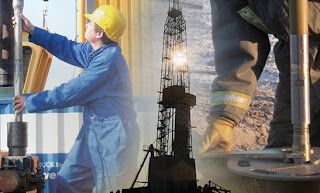Wireline logging is an industry specific term used commonly in the oil and gas industry, which involves lowering a logging device attached to a wire line into a borehole or oil well - to measure the properties of the rock and fluids of the formations.
The measurements that are obtained from this process are then interpreted and used to help determine the depths and zones where oil and gas will be expected to be found.
Wireline logging has a history that goes back over 85 years ago, where two brothers; Conrad and Marcel Schumberger ran what is considered to be the very first wire line log at the Pechelbronn Oil Company in France.
The logging process was a success and the two brothers named their new technique an electric survey. A few years later and the term ‘well log’ was being used in the USA. Wire line logging also became used, as the logging tool is lowered through the oil well or borehole on the end of a wireline.
Wireline logging tools are typically cylindrical in shape and range from a narrow diameter of around one and a half inches, up to around five inches. There are in fact three different basic types of wire line logging tools:
1. The first type measures the spontaneous potential, where the difference in voltage between an electrode in the wireline logging tool - where it is operating in the oil well or borehole, and another located on the surface. This allows the measuring of temperature and pressure, due to the natural radiation coming from the natural isotopes.
2. The second type of wireline logging tool has a source of excitation or stimulation as well as a sensor. The sensing systems in this type can be magnetic resonance, inductive, electric, and acoustic or other methods.
3. This tool is used to perform a kind of mechanical manoeuvre, where the kind of wire logging tool can retrieve rock samples at various depths to get the data for scientists to physically examine. When the formations are examined closely and carefully, you are able to draw some conclusions regarding depths, before continuing with the extraction process.
There are a number of electric log tools available for use, which can be categorised whether they are open hole logs or cased hole logs. Electric logs are defined through the physical properties that the tool measures, when the specific resistance of the rock and fluids are measured it is resistivity log. When the rock has its level of pore percentage measured, porosity logs technologies are used that are based on sound waves or nuclear reactions.
Wireline logging allows the acquisition of valuable data at a fast rate and over a wide range of depths, allowing fast and accurate decisions to be made regarding drilling, based on the information obtained. Understanding the physical properties of the oil well allows the proper management methods and techniques over its lifetime – and wire line logging makes that possible.

Comments
Post a Comment